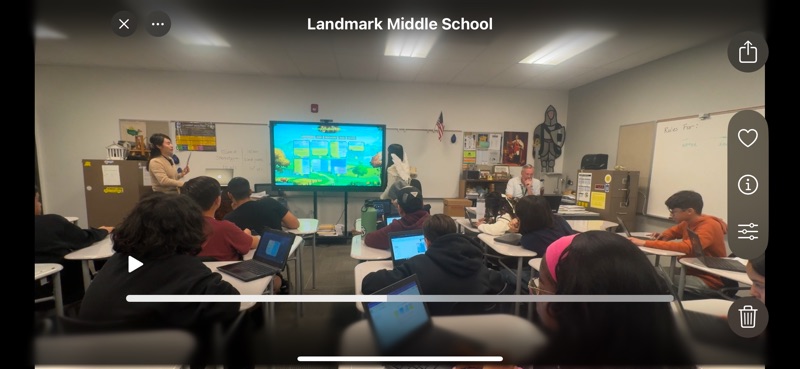Play to Learn, Conquering the End-of-Semester Burnout with a Medieval Adventure

As the holidays approach, it's natural for students' attention to drift toward festive plans. But what if we could harness that excitement and channel it back into learning? Introducing MedCon, a Medieval Economic Challenge that transforms your classroom into a thriving kingdom! I'm excited to share some royal resources and walk you through this engaging activity, easily adaptable for any middle school social studies classroom.
Why MedCon works:
- Engaging Narrative: The medieval setting provides a captivating context for learning about economics and decision-making.
- Hands-On Activity: Students actively build their empires, make choices, and see the consequences spontaneously.
- Critical Thinking: MedCon challenges students to analyze options, weigh pros and cons, and make strategic decisions like a real medieval ruler.
- Gamification: My custom-designed online game console (built with HTML, Javascript, and CSS) brings student's empires to life with probability-based outcomes. The first ten submissions even get featured on the game board.
Here's How it Works:
A captivating narrative and a set of simple and intuitive rules set the stage. In MedCon, students are tasked with 5 challenges (natural disasters, famine, barbarian attacks, and corruption) to survive depending on their chosen resources for their empire. The lesson objective is to teach them to think critically about resource management and strategic investment (like royal court, chivalry, education, and banks).
A compelling narrative, presented through text and images within a Google Document, introduces students to the 17 investable resources. This document also provides clear instructions and can be easily shared through Google Classroom.
Building an Empire:
Students prioritize their top 7 investments from the 17 options, carefully considering the potential consequences of their choices. The game is designed without a single "right" answer, encouraging students to explore different strategies and analyze the outcomes.
The code includes conditional logic for each disaster, allowing for varying levels of impact based on student choices. This activity can be adapted for multi-day lessons or week-long projects, providing flexibility for different classroom settings.
A structured template helps students organize their investment choices. They can even add creative elements to personalize their empires, fostering artistic expression alongside economic thinking.
The Gaming Interface:
The game console visually represents student empires in a 4x4 grid system.
- Interactive Elements: Each "attack" button triggers disaster events with relevant sound effects, creating an immersive gaming experience.
- Class Coins: The total number of empires that survive each disaster determines the "Class Coins" earned, fostering friendly competition and class unity.
- Levels: The game progresses through levels 1-5, with increasing challenges and attacks as students successfully navigate disasters.
- Assigned Roles: Students take on roles like the "Prophet" (who signals the disaster) and the "Angel" (who activates the attack and announces its effects), promoting collaboration and engagement.
- Disaster Simulation: The survival rate is determined by probability logic embedded in the code.
- Visualizing Economic Impact: Students witness the consequences of their choices, prompting them to think critically about resource allocation and economic stability.
Playing as a Class:
Visual aids like "Hand-Holding Panels" can provide helpful cues and promote collaborative learning.

Analyzing Student Proposals:
To further analyze student strategies, you can use the following rules and code to identify which students successfully mitigated specific disasters:
Rules:
- Rule 1: Students must include at least three of the following: Education, Royal Court, Judges, Agriculture, Happy Peasants, Chivalry, Trade Network, and Banks.
- Rule 2: To avoid a specific disaster, a student's top 3 choices must not include or exclude any of the disaster's impact areas.
Natural Disaster Impact areas: Happy Peasants, Infrastructure
Famine Impact area: Agriculture
Barbarian Attack Impact areas: Happy Peasants, Trade Network, Infrastructure
Disease Impact areas: Happy Peasants, Royal Court, Trade Network
Corruption Impact areas: Happy Peasants, Royal Court, Religious Institutions, Judge, Banks
JavaScript code: This snippet can be used to automate the analysis of student proposals and identify trends in decision-making.
const avoidedAreas = []; // Students who avoided Natural Disaster
Ready to Bring MedCon to Your Classroom?
I've created a whole suite of resources to help you get started:
- Gaming Interface (HTML): Easy customizable game console.
- DBQ File: A document-based question that introduces students to the 16 investment areas.
- Hand-Holding Panels: Visual aids to guide students through the decision-making process.
- Empire Template: A structured template for students to record and justify their investment choices.
Want to see MedCon in action? Click the Demo link



